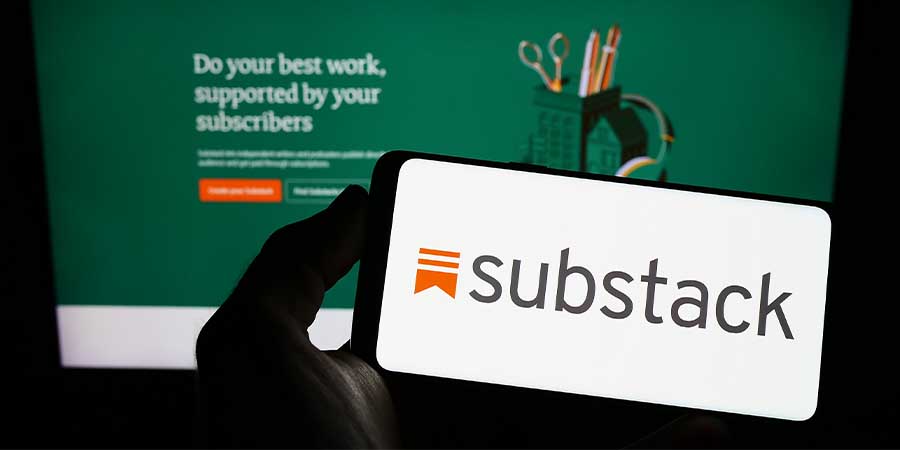In this article, we’ll look at the reasons behind the emergence of Substack’s Notes and its potential to become the go-to platform for writers seeking a social media alternative.
Key Takeaways:
- Substack’s Notes could be a strong Twitter alternative, particularly for existing Substack writers.
- Notes are separate from newsletters and chats, offering a more streamlined platform for sharing content.
- Substack’s Notes feature allows users to interact with each other through like, reply, and “restack” options.
- Notes will be available on the Substack website and app, and will not be sent to subscriber inboxes.
- Substack’s focus is on paid subscriptions, not ads, creating a different financial model for creators.
Notes: A Fresh Option for Writers
For many writers, finding a suitable social media platform to share their thoughts and ideas can be challenging.
Traditional options like Twitter may not always cater to their needs, and concerns over throttling links and marking them as unsafe only exacerbate the issue.
Enter Substack’s Notes. Launched to the general public recently, Notes offers a new option for writers, particularly those who have already built their audiences on the Substack platform.
This Twitter-like feature for shorter posts has the potential to become a go-to option for creators looking to share their work and engage with their readers.
Unleashing the Power of Substack’s Notes
One of the key features that sets Notes apart is its organization.
Notes will appear in a separate tab, distinct from the full newsletters available in the Inbox tab or the threads that can be found in the Chat tab.
Substack suggests using Notes to share a variety of content, such as posts, quotes, comments, images, and links.
Moreover, there is no character limit, according to Substack spokesperson Helen Tobin.
Another notable aspect of Notes is its capacity to support up to six photos or GIFs per post, though video is not supported.
Additionally, Notes will not be sent to subscribers’ inboxes, instead residing exclusively on the Substack website and app.
Users can interact with each other through like, reply, and “restack” options, which resemble Twitter’s retweet function.
Within the Notes tab, users can browse two distinct feeds: “Home” and “Subscribed.”
The “Home” feed displays notes from writers you follow and “writers they recommend,” allowing you to discover new content from unfamiliar creators.
The “Subscribed” feed, on the other hand, showcases notes exclusively from writers you follow.
How Notes Stacks Up Against Twitter
With its unique features and streamlined design, Notes may seem poised to take on Twitter.
However, there are some key differences between the two platforms.
For instance, Substack’s focus on paid subscriptions rather than ads creates a distinct financial model for creators.
The goal of the Substack network is to convert casual readers into paying subscribers, ensuring that the majority of financial rewards go directly to content creators.
Another crucial difference between Notes and Twitter is the user experience.
While Notes bears some similarities to Twitter, it offers a more focused environment for writers to share their content and engage with their audience.
This could prove particularly appealing to writers who feel overwhelmed or undervalued by the ad-driven model of traditional social media platforms.
Notable Writers Making the Move to Notes
Substack’s Notes has already garnered the attention of some high-profile writers.
Following Twitter’s temporary restrictions on Substack links, several big-name creators have announced plans to transition to Notes.
This move could provide a significant boost to the new platform, particularly if it becomes the only place to read certain writers’ content.
However, it is worth noting that Twitter has largely reversed its restrictions on Substack, leaving some writers with the choice of whether to continue using the platform or switch to Notes.
The outcome of this decision will likely depend on each individual writer’s experience and preferences.
Conclusion
Substack’s Notes presents an exciting alternative to Twitter for writers seeking a more focused and rewarding social media experience.
With its unique features and subscription-based model, Notes has the potential to reshape the way creators and their audiences interact online.
As more and more writers make the move to Notes, it will be interesting to see how this new platform evolves and whether it can establish itself as a go-to option for creators in search of a more tailored social media experience.
Time will tell if Notes can successfully challenge Twitter’s dominance in the social media landscape or if it will carve out its own niche, catering to the specific needs of writers and their audiences.
Regardless, Substack’s Notes is certainly a refreshing alternative in a digital world where writers are increasingly seeking platforms that prioritize their creative and financial well-being.
 Sections of this topic
Sections of this topic
















